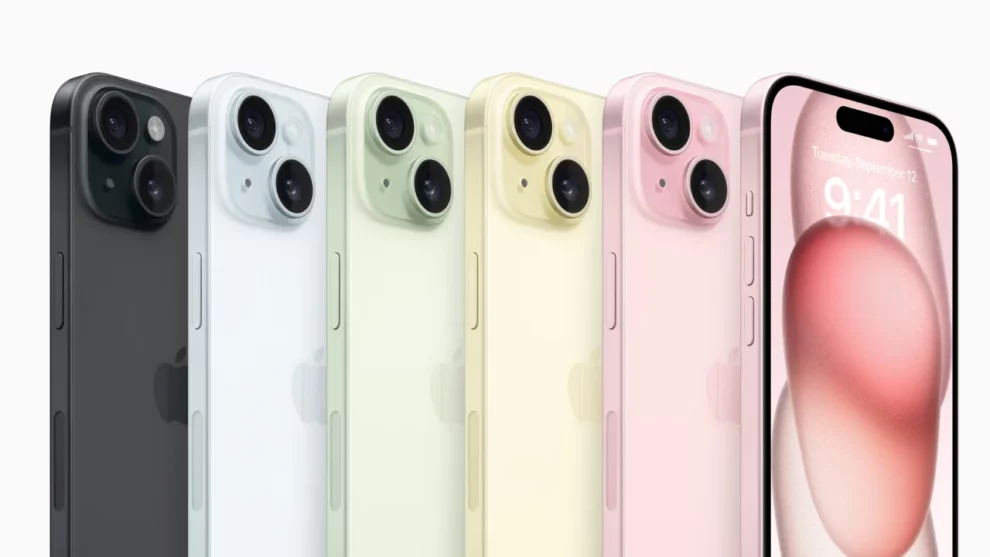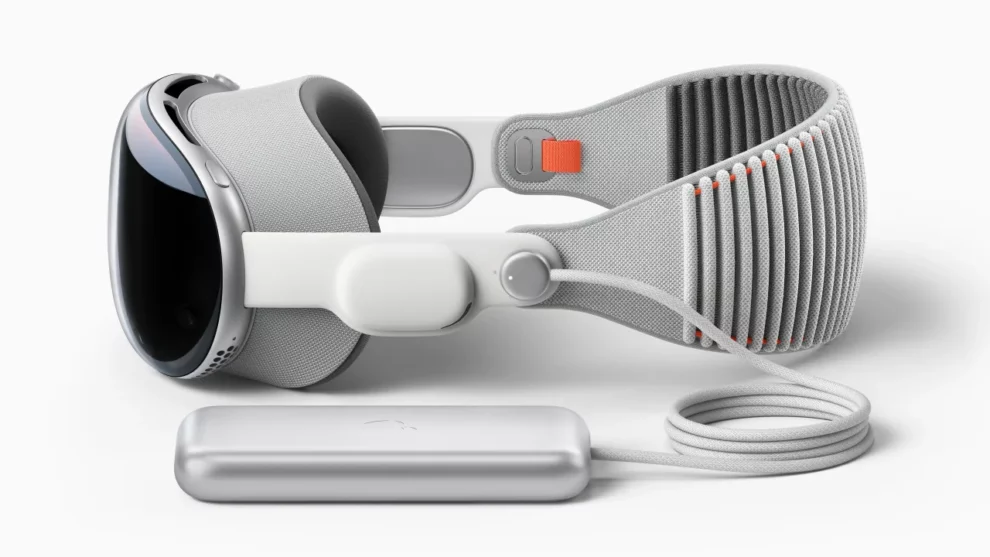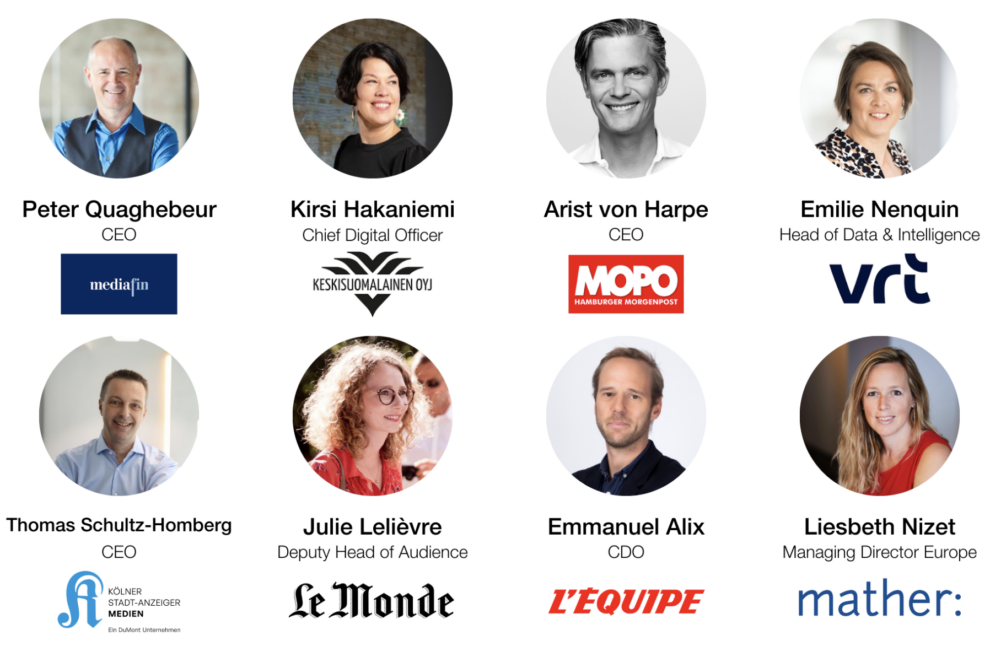Blog
News from Cupertino: What News Professionals Need to Know About The Latest Apple Event
In their latest event, Apple revealed its new set of devices and a series of exciting improvements relevant to the news industry. From the latest iPhone 15 to the Apple Watch Series 9, Apple strives to remain at the forefront of consumer electronics with AI and spatial computing playing an increasingly relevant role.
What does this mean for professionals in the news industry? Several advancements highlighted in Apple’s conference have the potential to affect how people produce and consume news content. Let’s dive deeper into three relevant themes from the event and their implications for the world of news:
- Apple’s commitments to AI
- Spatial video and storytelling
- Further advancements in neural interfaces

Apple’s commitment to AI and machine learning
Artificial Intelligence has evolved from a futuristic concept into a fundamental component of Apple’s product portfolio. In their recent presentation, Apple consistently emphasised their dedication to integrating AI and machine learning into their products, reflecting their vision for a seamless and intelligent digital ecosystem. This growing focus on AI has significant implications for content curation, personalisation, and content creation, ultimately leading to a more user-centric news experience for readers.
Apple’s recent announcement introduced the A17 Pro chip in the iPhone 15 Pro, a significant technological leap. This chip is the first mobile processor capable of executing machine learning tasks locally, eliminating the need to transmit user data to the cloud. As a result, the prospect of enhanced personal AI assistants operating directly on local hardware is rapidly approaching reality.
These developments may enable a switch from text-based search to voice-driven interactions to find relevant content and consume the news of the day, which is part of a larger industry trend that we have observed with Google Bard and New Bing.
Here at Twipe, we are familiar with leveraging AI to improve readers’ experience. JAMES, our digital butler, utilises AI and machine learning to create personalised reading lists and deliver content tailored to individual reader preferences. It operates like a digital assistant, continuously learning from reader behaviour to maximise engagement and reduce churn. Now, imagine the benefits of having JAMES operate not on the cloud, but directly on your personal device (a principle known as edge computing). We’re truly looking forward to it!
Apple’s commitment to AI in enhancing user experiences resonates with the existing applications of AI in the news industry. Both are driven by the shared objective of delivering highly personalised and engaging content to users.
Spatial video and storytelling
Another innovation presented at the most recent Apple event is spatial video. Spatial video gives users an immersive viewing experience, where depth and dimension play a crucial role. Spatial video is one of the primary reasons consumers may be interested in purchasing the Apple Vision Pro.
For news professionals, spatial video offers an opportunity to present news stories in a more engaging format. With the ability to create a more immersive viewing experience, publishers can now transport their audience directly into the heart of the story with a simple iPhone. Imagine watching a report on a natural disaster and feeling as though you’re right there, witnessing the events unfold. This level of immersion can evoke stronger emotional responses, making the news more impactful and memorable. Additionally, spatial video can provide viewers with a 360-degree perspective, ensuring a more comprehensive understanding of events.

While spatial video will be available on iPhone 15 later this year, the Apple Vision Pro required to experience these immersive videos will only be released in early 2024. In addition, the Apple Vision Pro has a high entrance barrier being priced at 3,500$, meaning that this technology will not be mainstream for quite a while. As prices for the technology come down, it may become more accessible and experience mass adoption.
A level-up for Human Device Interaction
The future of human-device interaction is evolving, and Apple is at the forefront of this transformation. One of the standout features introduced at the recent Apple event was the ‘Double Tap’ functionality. The Double Tap is a demonstration of the potential of neural interfaces, allowing direct communication between the human brain and external devices. For news professionals, this could redefine content consumption. As neural interfaces evolve and become more complex, so will the potential applications for publishers. Smart gestures may make interacting with news articles, such as accessing a push notification or sharing it with colleagues, more intuitive and immediate.
Conclusion
We highlighted three powerful intentions that Apple showcased: innovations in AI, spatial video, and neural interfaces, all relevant in an evolving news landscape. As these technologies shape content delivery and user engagement, news professionals face both opportunities and challenges.
For those in the news industry aiming to stay abreast of such advancements, the Twipe Digital Growth Summit on 26th September 2023 in Brussels is a must-attend. Dive deep into how technologies will shape the news, learn from global media innovators, and network with peers.
Stay ahead of the curve! Join us at the Twipe Digital Growth Summit before the last few tickets run out and confidently navigate the future of news.
Discover our speakers and agenda

Other Blog Posts

Stay on top of the game
Subscribe to Twipe’s weekly newsletter to receive industry insights, case studies, and event invitations.
"(Required)" indicates required fields

